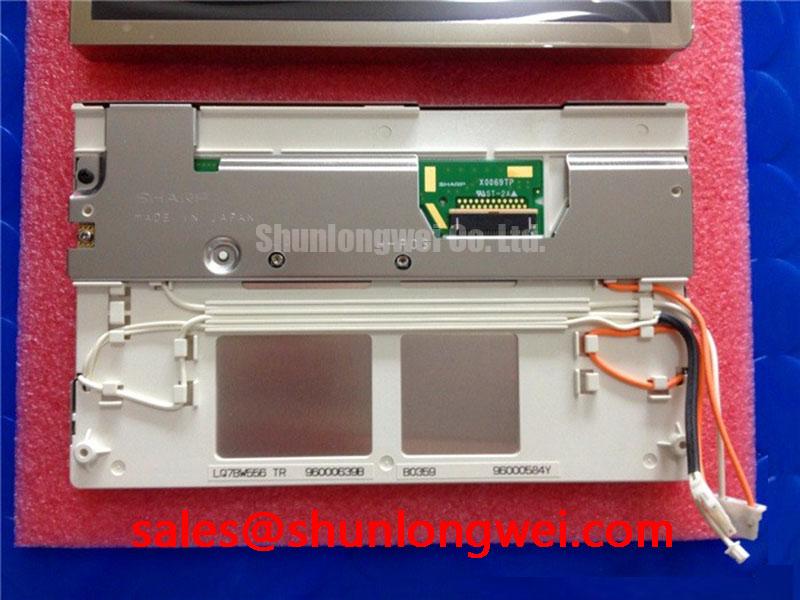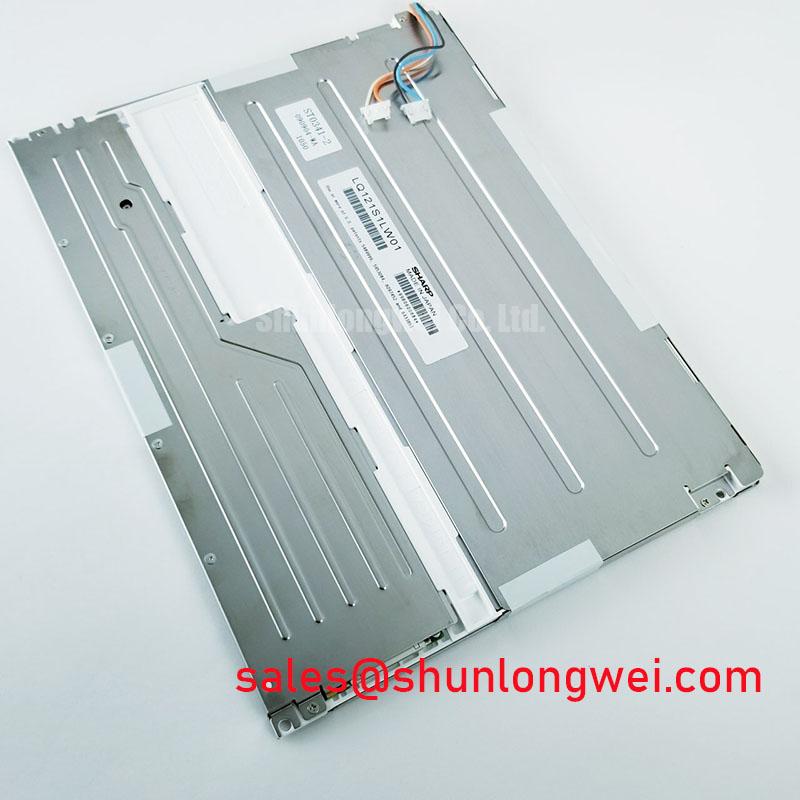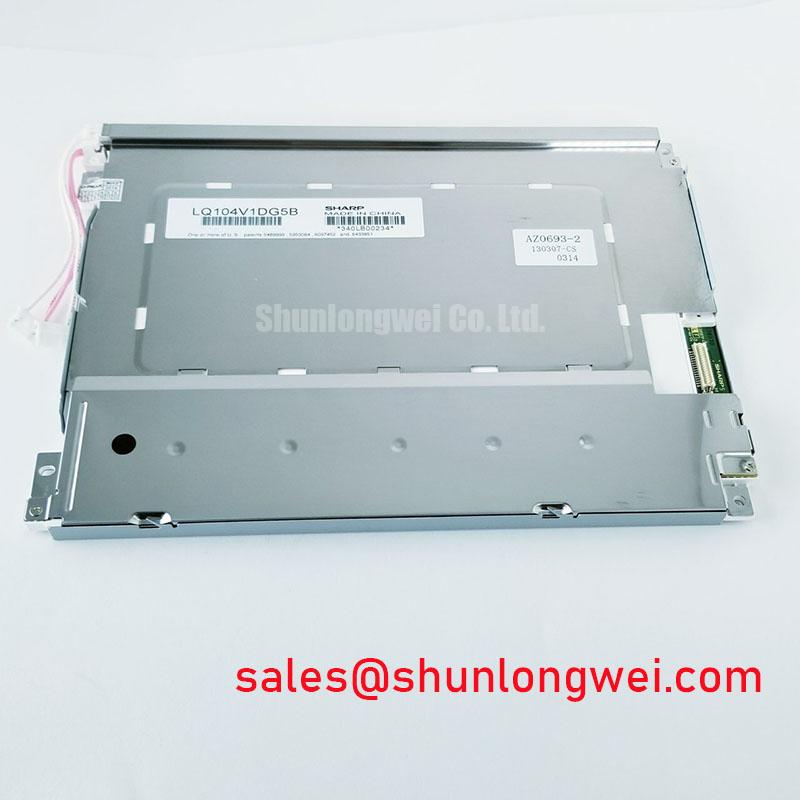Sharp LQ121S1LG42: Engineering a Legacy of Visual Reliability for Industrial Systems
An In-Depth Analysis of a Robust 12.1-inch SVGA Display Module
Content last revised on October 15, 2025.
The Sharp LQ121S1LG42 is a 12.1-inch a-Si TFT-LCD module engineered for long-term performance in demanding industrial applications. It delivers proven SVGA resolution with a focus on operational robustness and consistent readability. Key specifications include: 800x600 SVGA | 370 nits Brightness | 450:1 Contrast Ratio. This display provides a durable anti-glare surface and a wide operating temperature range, ensuring reliable visual output. For engineers specifying panels for control systems or instrumentation, this module provides a stable, well-documented solution designed for extended operational life. With its balanced performance metrics, the LQ121S1LG42 is an excellent fit for industrial HMIs and monitoring equipment where reliability is a primary design driver.
Application Scenarios & Value
System-Level Benefits in Industrial Control and Legacy System Integration
The Sharp LQ121S1LG42 is engineered for environments where visual clarity and operational uptime are critical. Its SVGA (800 x 600) resolution is a standard in many industrial sectors, making it a prime candidate for both new human-machine interface (HMI) designs and as a drop-in replacement for aging control panels. Consider an automated manufacturing line controller: the display's 370-nit brightness and 450:1 contrast ratio ensure that operators can clearly read critical process data, alarms, and diagnostics under typical factory floor lighting. What is the benefit of its standard LVDS interface? It simplifies integration with a vast range of industrial motherboards and single-board computers, reducing development time and compatibility issues.
The panel's mechanical design and specified operating temperature range of 0 to 65°C underscore its suitability for embedded systems that may experience moderate thermal stress, such as in control cabinets or instrumentation racks. Its resilience ensures consistent performance without the need for complex thermal management solutions often required for consumer-grade displays. For systems requiring a similar form factor but with different resolutions or interface standards, designers might also evaluate models like the LQ104V1LG61.
Key Parameter Overview
Highlighting Key Metrics for System Design
The technical specifications of the LQ121S1LG42 are tailored for industrial utility. The following table highlights the parameters most critical for system integration and performance evaluation.
| Parameter | Specification | Engineering Value |
|---|---|---|
| Screen Size | 12.1 inch (31 cm) diagonal | Provides a substantial active area for complex GUIs without an excessive physical footprint. |
| Resolution | 800(RGB) x 600 [SVGA] | A widely supported resolution, ensuring software compatibility and clear rendering of text and graphics for industrial controls. |
| Brightness | 370 cd/m² (Typ.) | Ensures readability in well-lit indoor industrial and commercial environments. |
| Contrast Ratio | 450:1 (Typ.) | Delivers clear differentiation between colors and shades, crucial for detailed GUIs and alarm status indicators. |
| Interface Type | LVDS (1 ch, 6-bit) | A robust, low-noise digital interface standard that simplifies electrical integration and supports reliable data transmission. |
| Operating Temperature | 0 ~ 65 °C | Supports deployment in a wide range of enclosed industrial settings without requiring specialized cooling. |
| Surface Treatment | Anti-glare, Hard coating (3H) | Reduces reflections from overhead lighting and adds a layer of durability against incidental contact. |
Download the LQ121S1LG42 datasheet for detailed specifications and performance curves.
Technical Deep Dive
Analyzing the CCFL Backlight and Its Impact on System Design
The Sharp LQ121S1LG42 utilizes a Cold Cathode Fluorescent Lamp (CCFL) as its backlight source. While modern displays often use LED backlights, the CCFL system in this module offers specific characteristics relevant to its target applications. The primary benefit of this mature technology is its highly stable and predictable performance over a long operational lifetime. For industrial equipment with long design and service cycles, this predictability is a significant asset. The spectral output of a CCFL is also very consistent, ensuring stable color reproduction over the panel's life, which is a key requirement in medical monitoring or process control where color consistency is linked to data interpretation.
However, the CCFL requires an external inverter to convert DC voltage to the high AC voltage needed to power the lamp. This is a critical design consideration. The datasheet specifies the connector types for the backlight, but the inverter itself is not integrated. Engineers must source and qualify a compatible inverter, accounting for its physical footprint, power consumption, and thermal output in the overall system design. This contrasts with LED-backlit panels that often integrate the driver circuitry, but it provides the flexibility to select an inverter that meets specific system-level requirements for EMI or input voltage. The presence of two lamp connectors suggests a dual-lamp system, which builds in a degree of redundancy and helps ensure uniform brightness across the entire 12.1-inch active area.
FAQ
What is the significance of the 6 o'clock viewing direction specified for the LQ121S1LG42?
The 6 o'clock viewing direction indicates that the optimal image quality, particularly contrast and color fidelity, is achieved when the display is viewed from slightly below the center. This is a critical factor for HMI design, suggesting the panel is best suited for mounting in consoles or racks where the operator's natural line of sight will be from this direction.
Does the LQ121S1LG42 require a specific power supply sequence?
Yes, like most TFT-LCDs, a proper power-up and power-down sequence is essential to prevent damage to the panel and driver ICs. The datasheet specifies the timing requirements between the logic supply voltage (+3.3V/+5.0V), the LVDS signal, and the backlight power. Adhering to this sequence is crucial for ensuring the long-term reliability of the display module.
What does the 'Normally White' display mode mean for my application?
A "Normally White" display means that the pixels are transparent (allowing light to pass through) in their off state. In the event of a signal failure to a pixel, it will appear white. This can be a desirable characteristic in some control applications, as a failed pixel is highly visible against a darker background, immediately indicating a potential display issue to the operator.
How does the Anti-glare surface treatment benefit industrial use?
The anti-glare surface diffuses ambient light, reducing specular reflections from overhead lighting commonly found in factories and control rooms. This significantly improves screen readability and reduces operator eye strain. The 3H hard coating adds a layer of scratch resistance, protecting the panel surface from incidental contact in a busy operational environment.
Strategic Considerations for Long-Life Systems
Integrating the Sharp LQ121S1LG42 into new or existing platforms is a strategic decision rooted in reliability and supply chain stability. As a product from a major manufacturer like Sharp, this module represents a well-established technology with a proven track record. For industries like factory automation, medical instrumentation, and test equipment, where system validation cycles are long and costly, specifying a component with predictable performance and a stable form-fit-function is paramount. The LQ121S1LG42 provides a dependable visual interface that allows engineering teams to focus on their core application logic rather than wrestling with the idiosyncrasies of unproven, consumer-oriented display technologies.

















